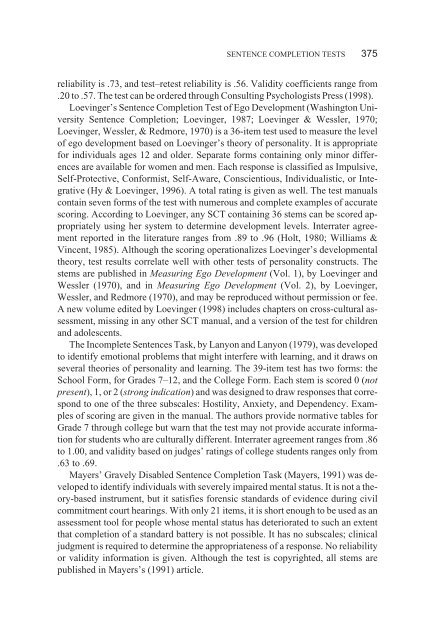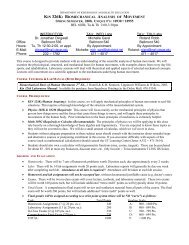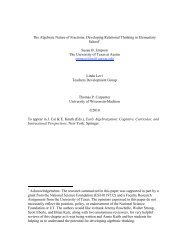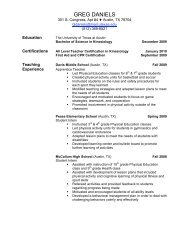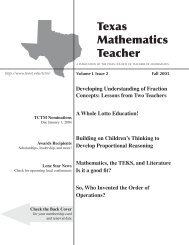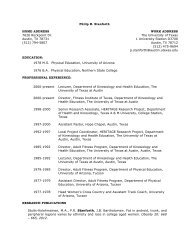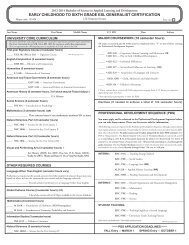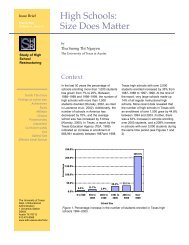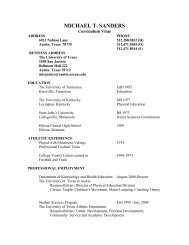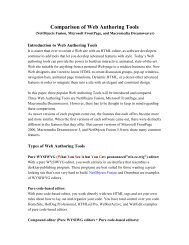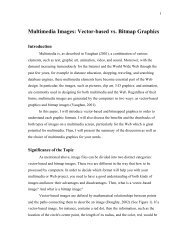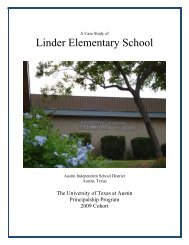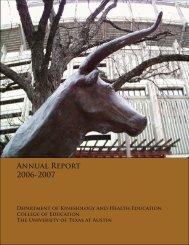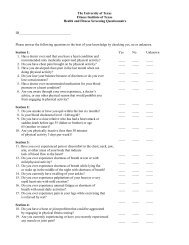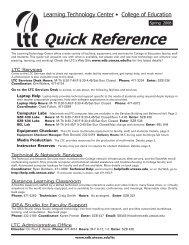Sentence Completion Tests: A Review of the Literature and Results ...
Sentence Completion Tests: A Review of the Literature and Results ...
Sentence Completion Tests: A Review of the Literature and Results ...
Create successful ePaper yourself
Turn your PDF publications into a flip-book with our unique Google optimized e-Paper software.
SENTENCE COMPLETION TESTS 375<br />
reliability is .73, <strong>and</strong> test–retest reliability is .56. Validity coefficients range from<br />
.20 to .57. The test can be ordered through Consulting Psychologists Press (1998).<br />
Loevinger’s <strong>Sentence</strong> <strong>Completion</strong> Test <strong>of</strong> Ego Development (Washington University<br />
<strong>Sentence</strong> <strong>Completion</strong>; Loevinger, 1987; Loevinger & Wessler, 1970;<br />
Loevinger, Wessler, & Redmore, 1970) is a 36-item test used to measure <strong>the</strong> level<br />
<strong>of</strong> ego development based on Loevinger’s <strong>the</strong>ory <strong>of</strong> personality. It is appropriate<br />
for individuals ages 12 <strong>and</strong> older. Separate forms containing only minor differences<br />
are available for women <strong>and</strong> men. Each response is classified as Impulsive,<br />
Self-Protective, Conformist, Self-Aware, Conscientious, Individualistic, or Integrative<br />
(Hy & Loevinger, 1996). A total rating is given as well. The test manuals<br />
contain seven forms <strong>of</strong> <strong>the</strong> test with numerous <strong>and</strong> complete examples <strong>of</strong> accurate<br />
scoring. According to Loevinger, any SCT containing 36 stems can be scored appropriately<br />
using her system to determine development levels. Interrater agreement<br />
reported in <strong>the</strong> literature ranges from .89 to .96 (Holt, 1980; Williams &<br />
Vincent, 1985). Although <strong>the</strong> scoring operationalizes Loevinger’s developmental<br />
<strong>the</strong>ory, test results correlate well with o<strong>the</strong>r tests <strong>of</strong> personality constructs. The<br />
stems are published in Measuring Ego Development (Vol. 1), by Loevinger <strong>and</strong><br />
Wessler (1970), <strong>and</strong> in Measuring Ego Development (Vol. 2), by Loevinger,<br />
Wessler, <strong>and</strong> Redmore (1970), <strong>and</strong> may be reproduced without permission or fee.<br />
A new volume edited by Loevinger (1998) includes chapters on cross-cultural assessment,<br />
missing in any o<strong>the</strong>r SCT manual, <strong>and</strong> a version <strong>of</strong> <strong>the</strong> test for children<br />
<strong>and</strong> adolescents.<br />
The Incomplete <strong>Sentence</strong>s Task, by Lanyon <strong>and</strong> Lanyon (1979), was developed<br />
to identify emotional problems that might interfere with learning, <strong>and</strong> it draws on<br />
several <strong>the</strong>ories <strong>of</strong> personality <strong>and</strong> learning. The 39-item test has two forms: <strong>the</strong><br />
School Form, for Grades 7–12, <strong>and</strong> <strong>the</strong> College Form. Each stem is scored 0 (not<br />
present), 1, or 2 (strong indication) <strong>and</strong> was designed to draw responses that correspond<br />
to one <strong>of</strong> <strong>the</strong> three subscales: Hostility, Anxiety, <strong>and</strong> Dependency. Examples<br />
<strong>of</strong> scoring are given in <strong>the</strong> manual. The authors provide normative tables for<br />
Grade 7 through college but warn that <strong>the</strong> test may not provide accurate information<br />
for students who are culturally different. Interrater agreement ranges from .86<br />
to 1.00, <strong>and</strong> validity based on judges’ ratings <strong>of</strong> college students ranges only from<br />
.63 to .69.<br />
Mayers’ Gravely Disabled <strong>Sentence</strong> <strong>Completion</strong> Task (Mayers, 1991) was developed<br />
to identify individuals with severely impaired mental status. It is not a <strong>the</strong>ory-based<br />
instrument, but it satisfies forensic st<strong>and</strong>ards <strong>of</strong> evidence during civil<br />
commitment court hearings. With only 21 items, it is short enough to be used as an<br />
assessment tool for people whose mental status has deteriorated to such an extent<br />
that completion <strong>of</strong> a st<strong>and</strong>ard battery is not possible. It has no subscales; clinical<br />
judgment is required to determine <strong>the</strong> appropriateness <strong>of</strong> a response. No reliability<br />
or validity information is given. Although <strong>the</strong> test is copyrighted, all stems are<br />
published in Mayers’s (1991) article.


